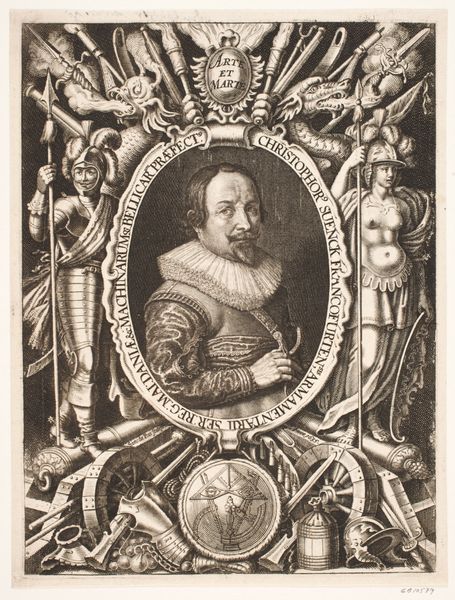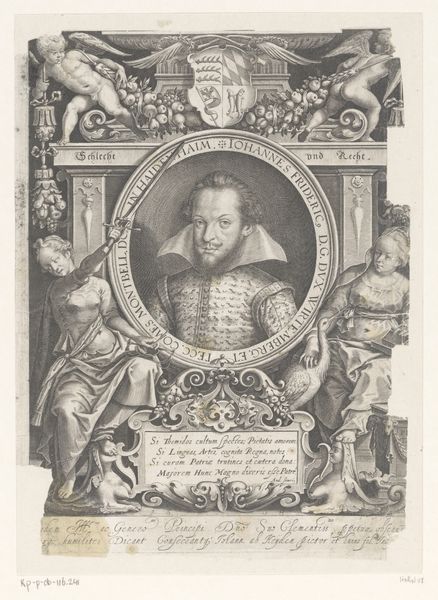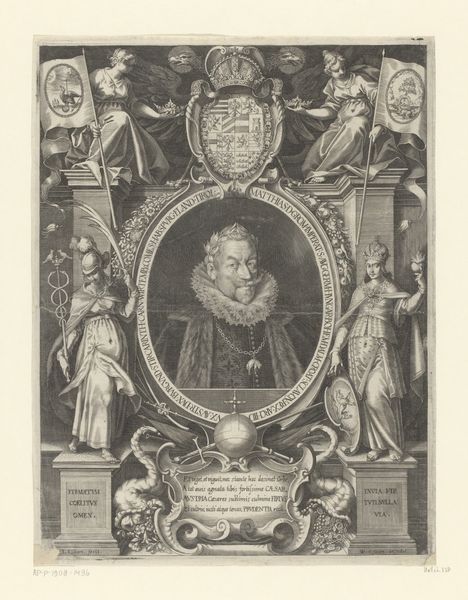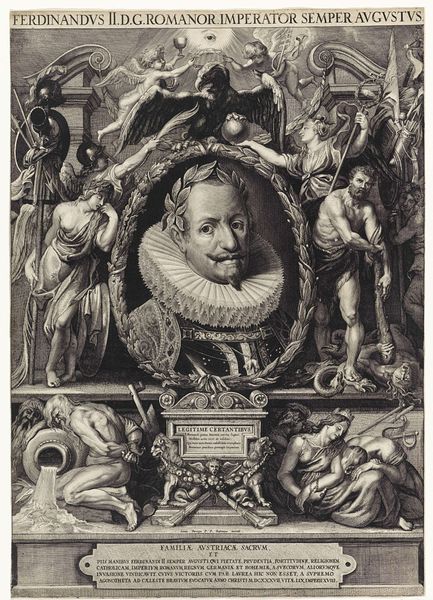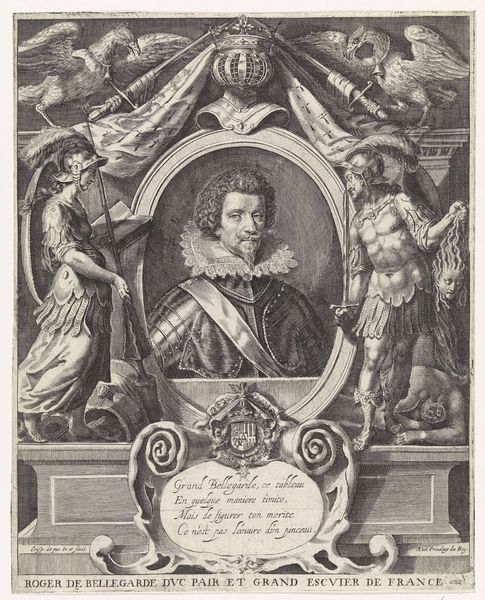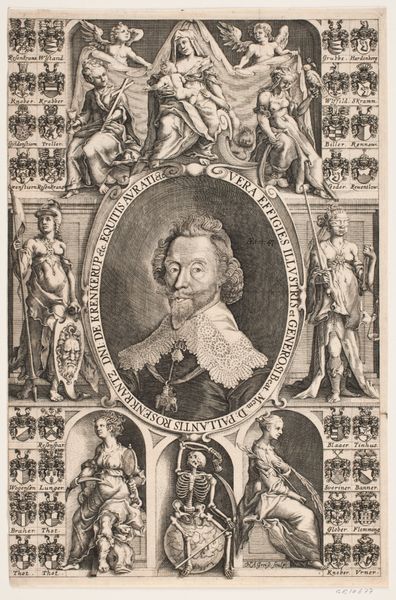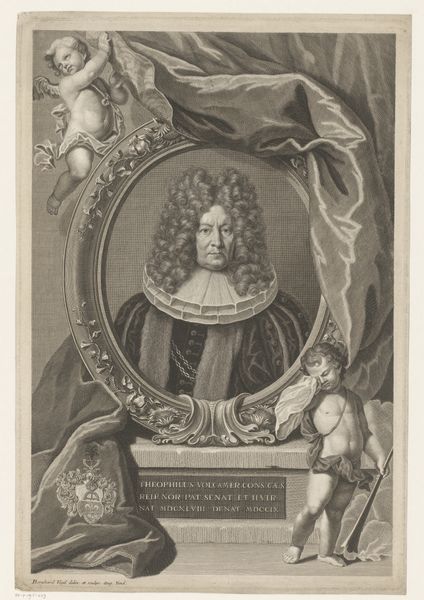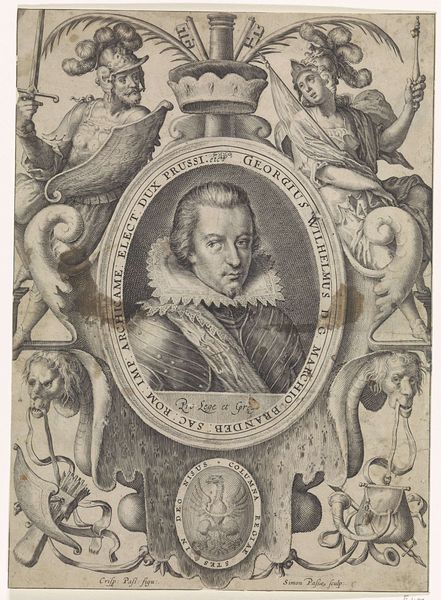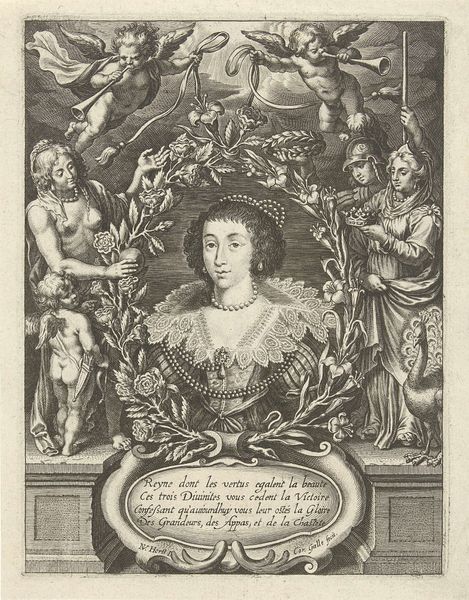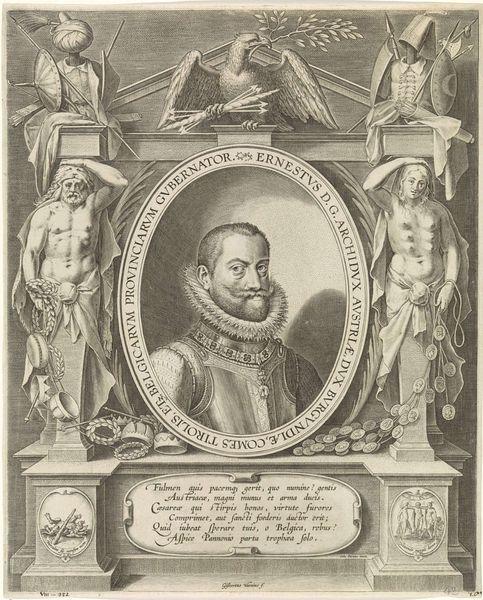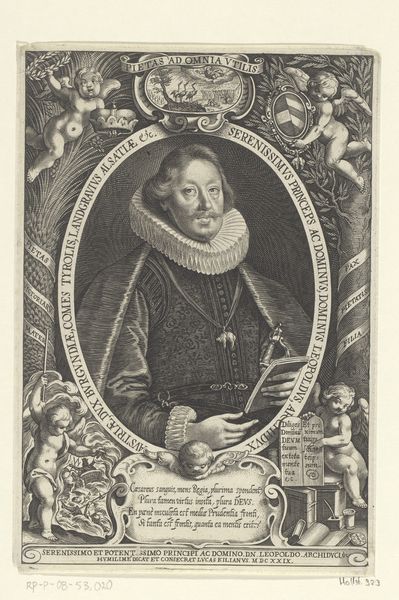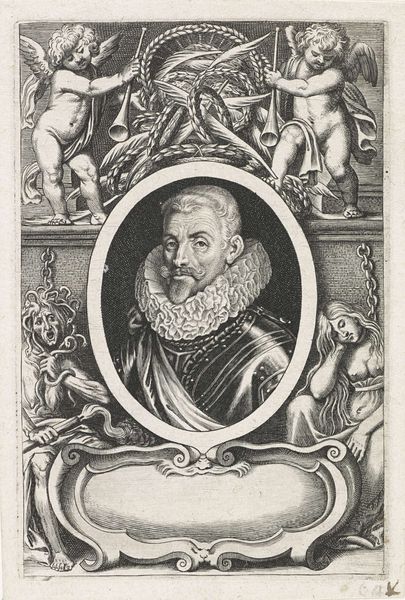
drawing, print, engraving
#
portrait
#
drawing
#
baroque
# print
#
men
#
engraving
Dimensions: Sheet: 13 1/4 x 9 7/8 in. (33.7 x 25.1 cm)
Copyright: Public Domain
This print of Rudolph II was made by Aegidius Sadeler II, a master of the engraving technique. The process begins with a metal plate, usually copper, into which the design is incised with a tool called a burin. The plate is then inked, and the surface wiped clean, leaving ink only in the engraved lines. Finally, the plate is pressed onto paper, transferring the image. Look closely and you can see the remarkable level of detail Sadeler achieved. The lines define not just the contours of the figure, but also the textures of his armor, the soft ruff around his neck, even the play of light on his face. But this isn't just a demonstration of technical skill. Consider the immense labor involved, and the social context in which this portrait was created. Printmaking in the 16th and 17th centuries was a key means of disseminating images and ideas, and an important tool for projecting power. Sadeler’s print subtly suggests that Rudolph II’s authority is produced through many hours of work to impress and disseminate the image of the King across Europe.
Comments
No comments
Be the first to comment and join the conversation on the ultimate creative platform.
